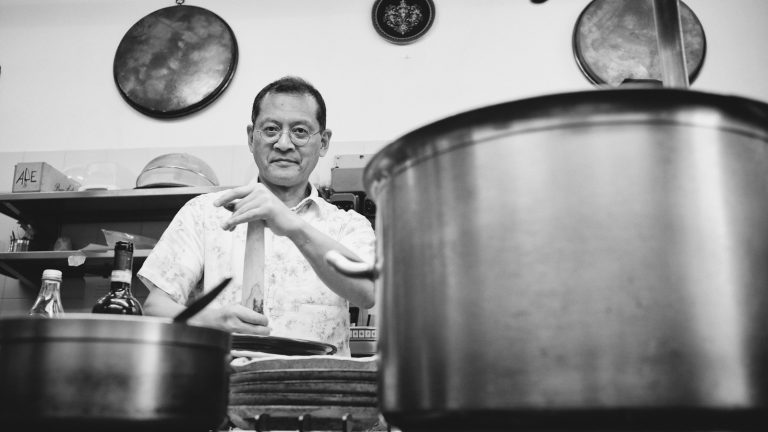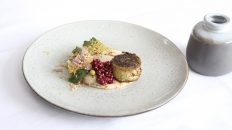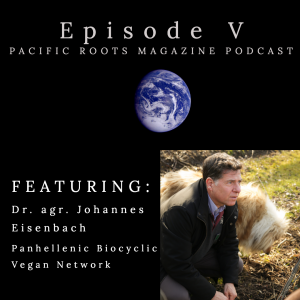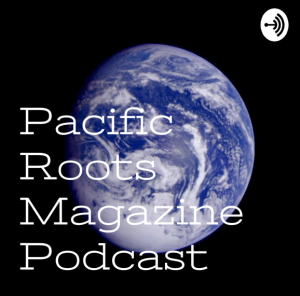Shojin ryori is a form of traditional Zen cooking, a vegetarian cuisine that is also inherently plant-based, with roots in Chinese and Japanese Buddhist monastic culture.
Toshio Tanahashi is a master of Shojin cuisine as well as a great influence on the contemporary culinary scene in Japan. He has travelled the world, sharing his depth and expertise knowledge of Shojin cuisine, not only as a method of preparing food but as a way to interact with and show respect for our world and environments.
“Today we are facing a number of crucial issues on this planet – food problems, population problems, health issues, energy problems, and more. Tanahashi believes pursuing the possibility of vegetables will lead to find solutions to all these problems we have today.
Shojin is not simply a means of obtaining pleasure through eating: it is a rigorous disciple in which extended study leads one to an understanding of the profundities of Buddhism. This is one of the most precious forms of culture that Japan is proud of to the world. It is a cuisine which goes beyond daily custom and concept and creates new experiences. The techniques of the exciting cuisine, which make your body happy, and show respect for the soil and terroir is the Shojin spirit.” -From “Waku Waku Shojin”
With great interest in Shojin ryori and the work of Master Toshio Tanahashi, Pacific Roots Magazine was honored to have an interview with him this Summer to learn more about the Buddhist cuisine, its philosophical and practical foundations and the global work of Toshio.
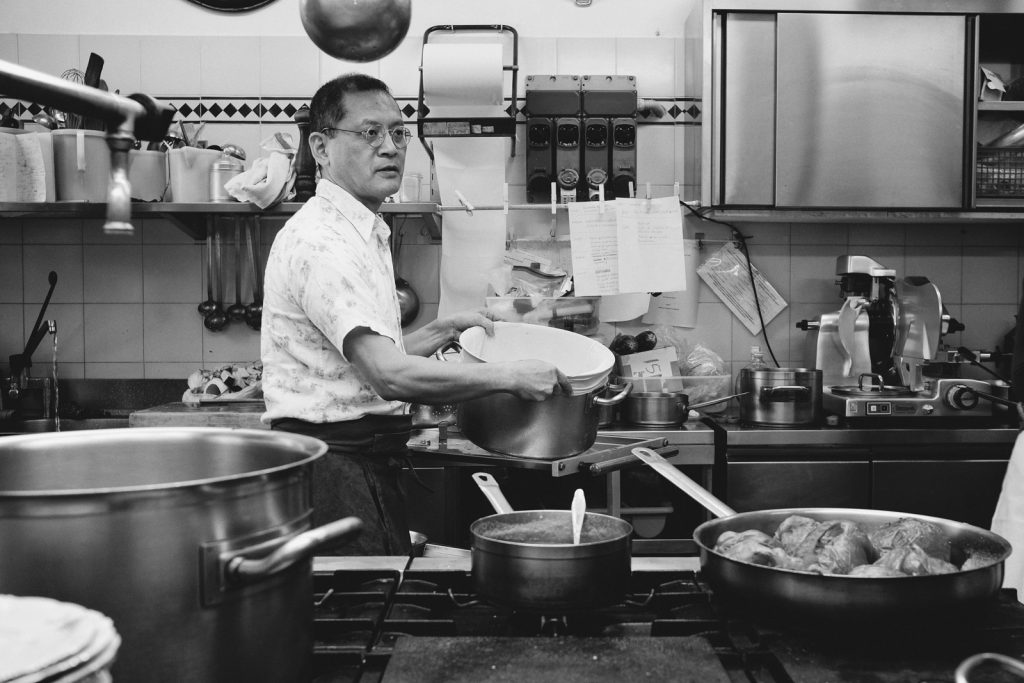
The following transcript is from a Skype interview between Toshio Tanahashi, Master of Shojin ryori, Neal Somchand, his apprentice (also translating throughout the interview) and Annika Lundkvist, editor of Pacific Roots Magazine.
Toshio: First, thank you very much Annika, I am very happy to have an interview with you.
Annika: I am very happy to interview you Toshio. Thank you for taking the time and Neal thank you for taking the time to translate. Neal, what is the relationship between you and Toshio- you are his apprentice, correct?
Neal: I have been with Sensei for about three and a half years now. I’m not a chef. I had my own interest in Zen. I entered a temple for three months myself. It wasn’t what I was looking for. So I left the temple and searched and came across Sensei and started working with him and studying under him- purely with the cuisine, helping with events, mainly overseas. We’ve worked together in Paris, London, Chiang Mai, Singapore and Hong Kong.
Annika: Ok, that’s very interesting. So when Toshio returns to visit Sweden you might help working with that.
Neal: Yes, exactly.
Annika: This is my introduction, speaking with you both, to Shojin. I’m very interested in learning more as well as featuring Shojin as a continuous theme at Pacific Roots Magazine. Neal you mentioned Zen, so I would like to ask Toshio what is the relationship between Zen and Shojin.
Toshio (as translated by Neal): Up until the fifth century Buddhist monks were generally begging for or requesting food. So people around them would give them food. This happened until the fifth century when Buddhism entered China. At this point, there were too many monks and not enough people to give them food and therefore the rules within Buddhism became less strict and it was decided that monks should become self sufficient and start growing their own food. So that’s really where the cooking began within the Buddhist temple. So obviously within Buddhism there is a strong belief that you shouldn’t be killing any animals and you shouldn’t be sacrificing any life and so that’s why Shojin is a vegetarian- actually a vegan and plant-based diet as well. It’s simply because of the Buddhist philosophy behind it, where nothing should be killed for your own pleasure.
Annika: So Shojin is inherently a plant-based cuisine.
Neal: Yes, it’s completely plant-based.
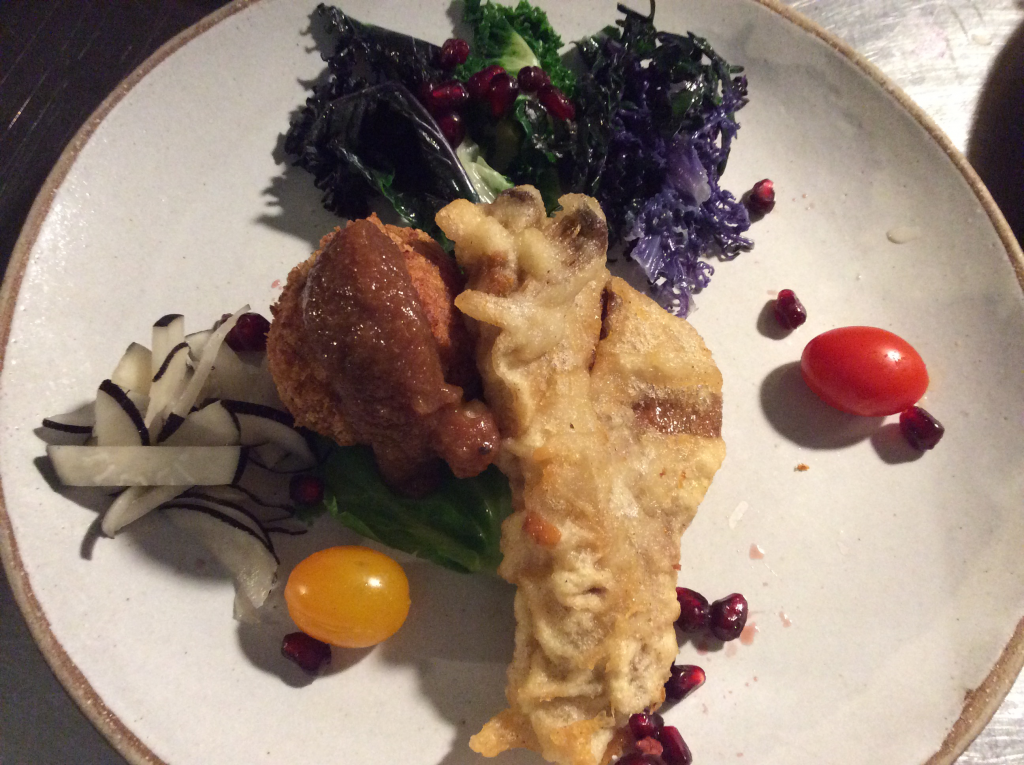
Toshio (as translated by Neal): Within Buddhism, Zen became the strictest sect and also spread the most. The main food then was obviously vegetables and grains. The only people who could travel easily across countries then were monks and so a lot of monks would go to China to understand the teachings of Buddhism there, where it was hugely flourishing. So in the twelfth century, one of the monks, Dogen, went over to China and what he picked up on was the importance of food within Buddhism – as an integral part of Buddhism. What he came back with after spending time in China was how important the food is and that’s really where the Shojin ryori in Japan starts. There are some records that it came earlier but I think the environment wasn’t really conducive for the food to really flourish. I think the economically it was not viable but in the twelfth century everything was aligned, food became integral and it was an environment where food could flourish. So then in the twelfth century, Shojin ryori really began to gain traction. That’s where it began and it has continued since.
Annika: This importance of food within Buddhism that Dogen recognized in China- what was it? What is the importance?
Toshio (as translated by Neal): Dogen Zenji (Dogen is the monk’s name and Zenji means Zen master) was one of the most famous Zen monks. He is the founder of Japanese Zen and Shojin cuisine. When he arrived in China and saw an old Chinese Zen master at the port who had come from a temple far away to buy ingredients including dried shiitake mushrooms which had come from Japan, presumably with Dogen. Dogen learned the truth and philosophy of food for people from this senior monk. Dogen asked him “Why do you came here to buy ingredients for young monks? Why didn’t you get one of the younger monks to do this? You are so senior, why have you come all this way to pick up the mushrooms? I don’t understand your behavior.” The old monk responded “You don’ t understand the importance of choosing and preparing food. Food is life. To prepare foods is most important for us. I wonder why anyone else could do it instead of me.“
So Dogen understood deeply then that preparation of food is essential in spiritual practice as well. When he came back to Japan he decided to train in the preparation, cooking and eating of food as meaningful practice for monks in the temple. He published “Tenzo-Kyokunan & Fushuku-handout” the strict guidelines of how to cook and eat. This is just based on the authentic Japanese culinary style and culture. It influenced master Rikyu Sen, the founder of Cha-do (tea ceremony) to establish Chanoyu Culturee (Japanese tea ceremony culture).
Unfortunately, now Japanese people forget these stories and meanings to contribute to a better life and to learn from traditional wisdom and philosophy for Health, Environment, Sustainability and Mindfulness.

Annika: What is authentic Shojin?
Toshio (as translated by Neal): There are four principles for authentic Shojin. The first is truth. Rice and vegetables as plants cannot lie, they are very innocent and very pure. That’ something you have to learn as a human, to be living with truth. That’s the first principle of Shojin and something we learn from the ingredients
The second one is that the amount of effort is irrelevant. There should be no issues with ‘Oh it takes too much time’. So you don’t use machines, everything is done by hand. There shouldn’t be any issue with time, preparation etc. So therefore, the emphasis is on the process, rather than the output.
The third principle is related to respect- to really listen to and understand the vegetables. So using only things that are in seasons, using the entire vegetable so there is no wastage- which is a form of respect as well. Being aligned with where the vegetable has come from is also important, knowing the journey of the actual ingredients. So if you were to summarize this, it is about respect. No wastage, not using ingredients that are out of season and sourcing ingredients grown locally.
The fourth principle is that the food that you’re making should incorporate mindfulness, health, environment and sustainability. You should incorporate all four elements when you’re making a dish. And again, it’s all interrelated, you should be using seasonal ingredients, locally produced.
By meeting these four, you purify the mind and body. So it’s not just the people who are eating the food, it is also about the people preparing the food.
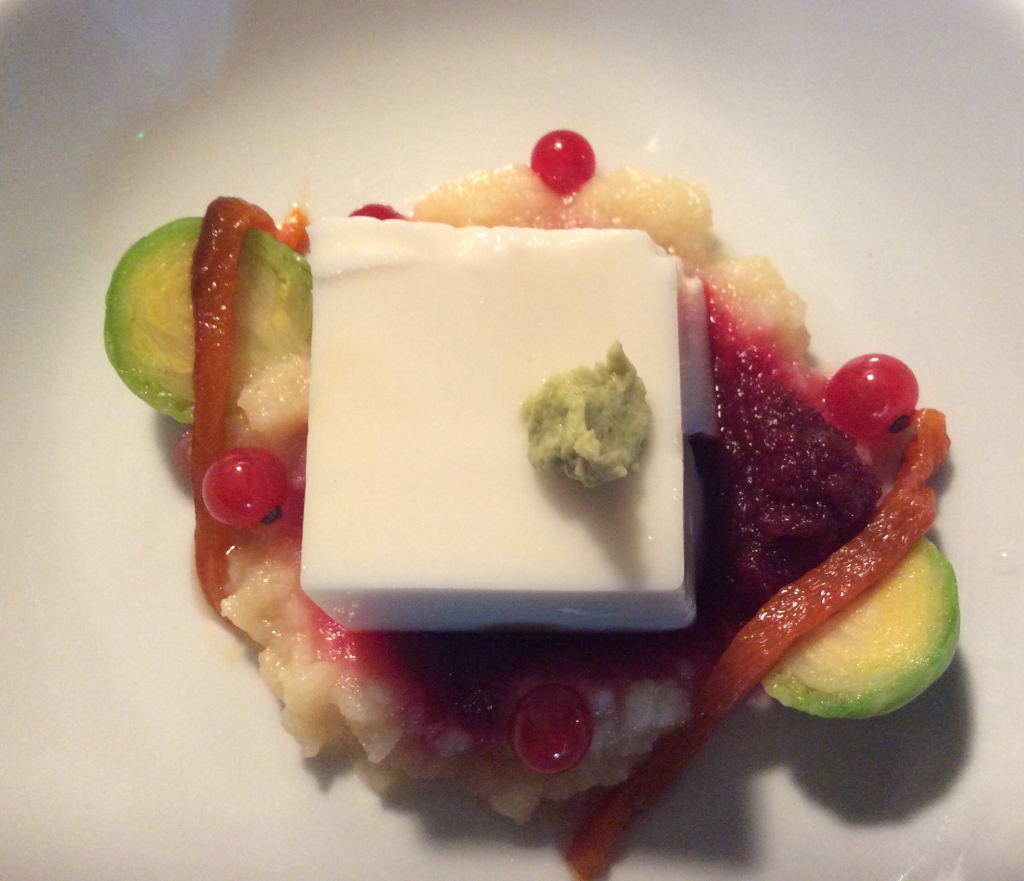
Annika: Can you share more about your background studying at Gesshinji Temple?
Toshio (as translated by Neal): The foundations of Japanese culture all exist within the temple. This isn’t just cooking, it’s architecture, it’s gardening, it’s crockery, it’s cleaning, it’s the decoration of the temple, the pictures that are on the wall, the words, the incense. And so it’s basically a gathering of everything that is Japanese culture. To find these very authentic places nowadays is rare but for Sensei, Gesshinji was one of these temples and my teacher, the nun – a head monk, female monk- was also very deeply steeped into all of these cultural practices. So I learned a lot from that.

Annika: Can you share about Gesshinkyo- when it opened and closed and the experience with that restaurant and response of diners?
Toshio (as translated by Neal): ‘Gesshin’ means ‘the moon’s heart’. ‘Kyo’ is ‘house’. Because I studied at Gesshinji temple (‘ji’ meaning ‘temple’) I carried the name of Gesshin over to the restaurant. Gesshinkyo restaurant opened in 1992 and gradually it became more and more popular to the point where you couldn’t get a reservation. I closed the restaurant in 2007 when it was at its peak.
Annika: So that was a conscious decision, to close it at its peak?
Toshio (as translated by Neal): The reason it closed is because I felt the purity of Shojin was going. It was in the middle of Tokyo and there was the economic stress of making a viable business that also impacted emotional well-being and how I approached the food and I felt Shojin was losing its authenticity. Secondly, my wish was to spread the food, not the restaurant so therefore I decided it was not about opening more restaurants but about doing something that could help with spreading the concept of the food and the understanding of Shojin.
Annika: And people were very sad, weren’t they?
Toshio (as translated by Neal): They were angry actually. (everyone laughing)
Annika: What are some local ingredients there in the Kyoto region that you particularly enjoy working with?
Toshio (as translated by Neal): Kyoto traditionally as a region has a lot of the best vegetables and also all of the best produce from around Japan would gather there. So I would typically buy vegtables in Kyoto, such as eggplant, aubergine, sweet pepper, bamboo, matsutake mushrooms. But I would also get wild vegetables from a region called Akita, and summer vegetables from Okinawa such as bitter gourd and some very original vegetables you can only get in Okinawa. The focus was on the best and most seasonal.
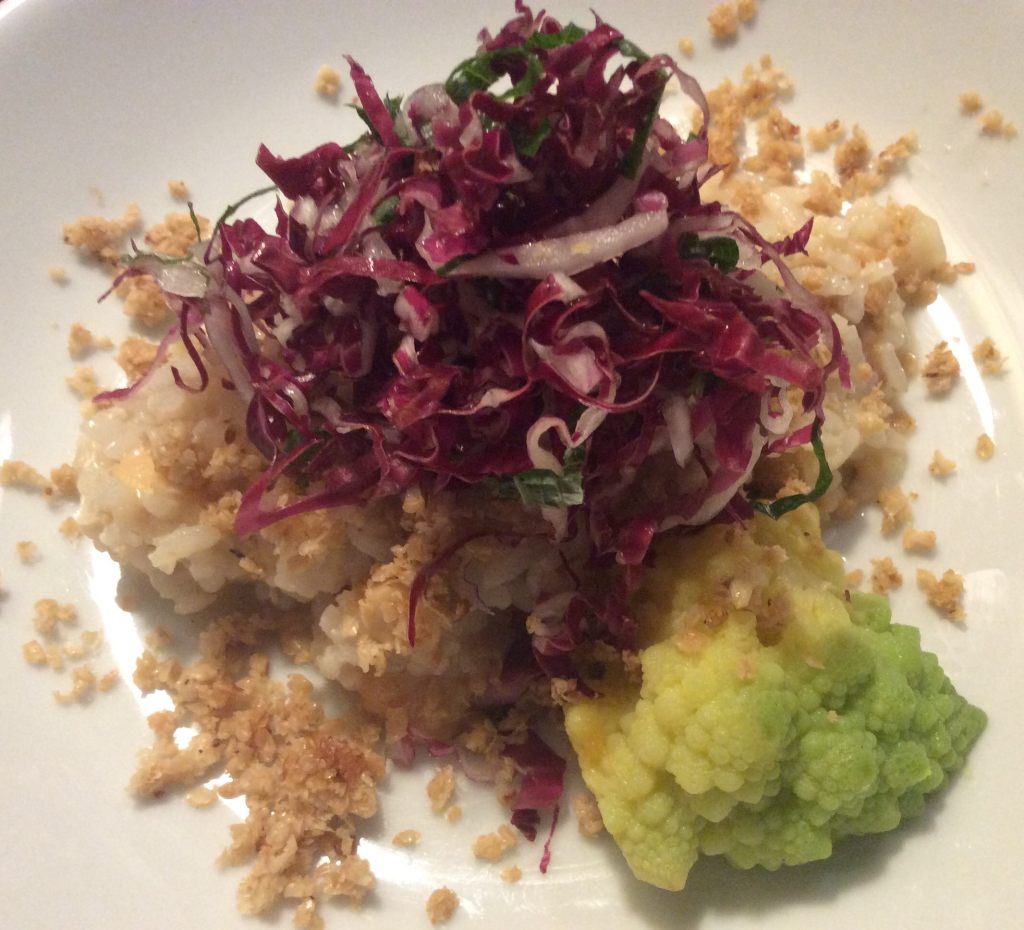
Annika: How do ingredients you work with change by season?
Toshio (as translated by Neal): Each one of my menus in a season would have forty different vegetables. So say there are six courses in the menu, then across the courses all forty vegetables would be included. and they would all change with each season. This is representative of how fertile the soil here in Kyoto is and also the huge number of variety of vegetables you can get here.
Annika: Does Shojin convey a different essence and energy with food preparation and ingredients in different seasons?
Toshio (as translated by Neal): In each different season you have different elements. In Spring you have the buds of the plant, in the Summer you have fruits, in the Autumn you also have fruits but also things like mushrooms and then in Winter you have roots vegetables. And so each of these have different functions. So for example in the Summer, the produce is more cooling and also it’s a time when perhaps when your body is a bit tired and your immunity is down so naturally the ingredients increase your immunity. In Autumn it’s the same. In Winter, root vegetables heat the body and in Spring, the produce is very bitter, helping to purify and deotx the body.
Annika: During your life as a chef have you ever worked with any ingredients that surprised you?
Toshio (as translated by Neal): Everytime, all vegetables. There are so many possibilities for a single vegetable, cooking gives you the opportunity to express this every time.
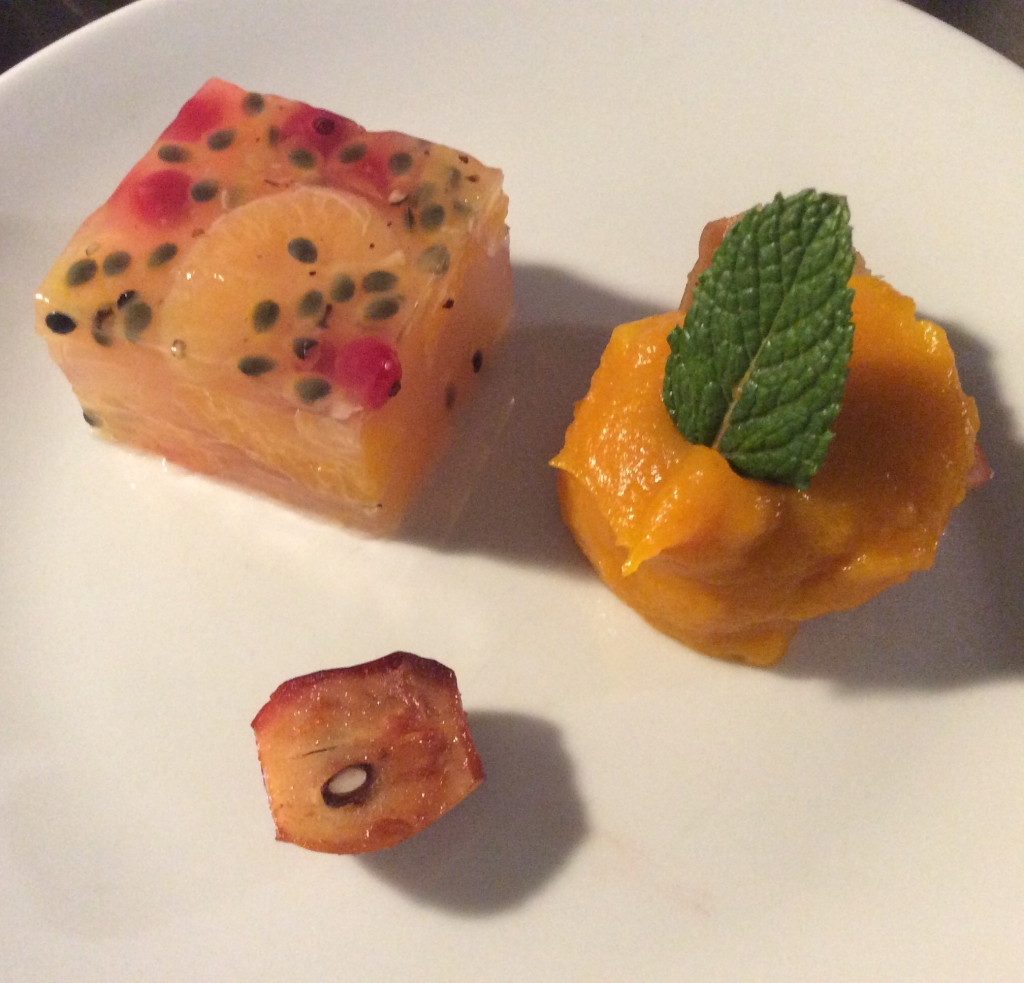
Annika: Shojin has ancient roots and is more than a cuisine, it is a philosophy of environment and use of resources. How do you see Shojin Ryori possibly showing people a different way of consumption, a different view of resources and ingredients?
Toshio (as translated by Neal): Before monks would eat they would recite 5 lines which remind them of five important things for anyone who is consuming Shojin. I am going to give you a summary of these five lines.
1. Try and imagine and visualize where this food has come from, who has harvested it and produced it.
2. Really question yourself as to whether you deeserve this food. It has taken so much time to prepare, so much effort. Ask yourself, ‘Have I today done everythnig I can to deserve this food and be very honest with yourself.
3. While eating the food do not feel anger, do not feel greed, do not be ignorant.
4. Be conscious that this is for the body. Its not for pleasure. It’s almost like a medicine.
5. Remember how improtant food is within the spiritual practice.
These are 5 precepts that are very important. A way to help people understand is to help them to see that Shojin is important for your body, for the environment, for sustainability and also important for mindfulness. In its ancient form, those five precepts are how monks would have interacted with their meal.
Annika: You launched The Culinary Institute in February 2008. What motivated you to establish The Institute and what are the activities of the Institute today?
Toshio (as translated by Neal): The Institute opened in 2008 with a mission to spread Shojin. Eventually we would like to create a foundation through the Institute- a foundation where individuals from all over the world can come and learn Shojin. Currently there are individuals who want to learn but there is no place to learn and no real facilities to be able to learn. That is the overall goal of the Institute. I also travel to do events and spread the word of Shojin. I am seeking a base anywhere in the world where I can have the Institute and Foundation where people come and learn to understand Shojin, not just the food but other wisdom as well, as it is applicable to everyday life- not just within Japan, it has worldwide relevance. I feel this is the right time because of what is going on in the world as well as the level of interest I am getting in the food.
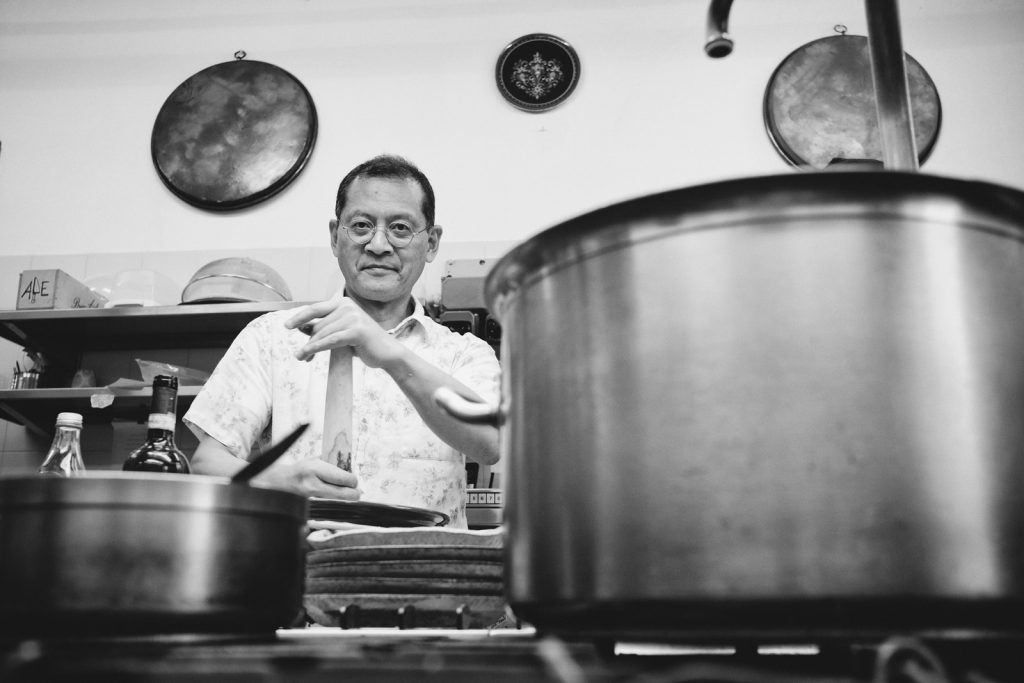
Visit Toshio Tanahashi’s Institute online here
Feature & Interview by Annika Lundkvist at Pacific Roots Magazine Editorial Desk

